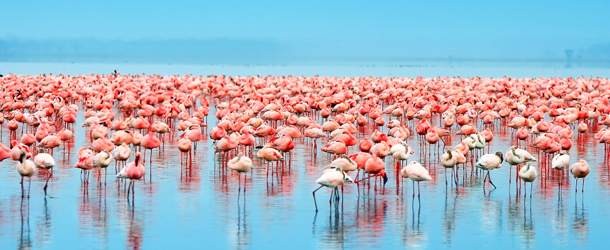One of the most astounding experiences that anyone can try in their life is a safari in Africa. Home to some incredible species, the continent is an idyllic place to get up close and personal with some fascinating creatures. Often people go hunting for the so-called ‘Big 5’ – lion, elephant, buffalo, leopard and rhinoceros.
And that’s fine, these are the most popular and it’s an amazing sight. But you’ll potentially see hundreds of different species. So here’s a list of five animals you may see on a safari in the Kruger National Park in South Africa that you may not have heard of before.

Aardwolf
The aardwolf is a really interesting creature. It is sort of similar to a hyena, but with a diet of insects rather than larger mammal carcasses and they are generally shyer. They aren’t aggressive animals, and are not particularly adept at defending themselves, lacking speed and fighting skills, so will instead focus more on trying to trick a predator by doubling back on its own tracks, or warding them off in other ways by trying to appear bigger or emitting a foul scent. They are quite small mammals, and more nocturnal, but you may still see them on a safari.

Serval
The serval is a wild cat, which looks a bit like a leopard but is much smaller. The head of the cat often looks disproportionate to the body, but this is more due to the fact that it is the cat with the longest leg length in relation to body size, out of all species. Again they are mainly nocturnal but can hunt during the day, and their diet is primarily rodent but can include both smaller and much larger creatures. They are incredibly intelligent, very fast (up to 50mph), can jump up to 12 feet from a stationary position.

Honey Badger
The honey badger is the only animal on this list that I had heard of before writing this. It is closer to a weasel than other badgers, and one of the most vicious creatures on the whole planet. Intelligent enough to know how to use tools, they are exceptionally strong and aggressive, and attack savagely. They’ve even been reported to attack children in some parts of the world, and dig up human remains for food. These are truly fascinating creatures.

Caracal
Another wild cat, the caracal (also known by the name desert lynx), is a solitary animal that is clearly identifiable due to the tufts of hair that protrude from the tips of the ears, that can add up to 50% on the length of the ear. Interesting features of the caracal include the ability to hunt adult gazelle, and the fact that alongside the usual sounds of cats it can also bark, thought to be used as a warning.

Bushpig
Generally quite sedate unless they have young, bushpigs are similar to warthogs and are a very social animal. You’ll usually see them in groups. They are fairly small, and a pest to many farmers in the country but in the wilds of the safari park they live well. They are very similar in looks to a domestic pig but with more muscular snouts, while their manes bristle when the animal is agitated.
By Ian Lewis
Google




Comments: no replies